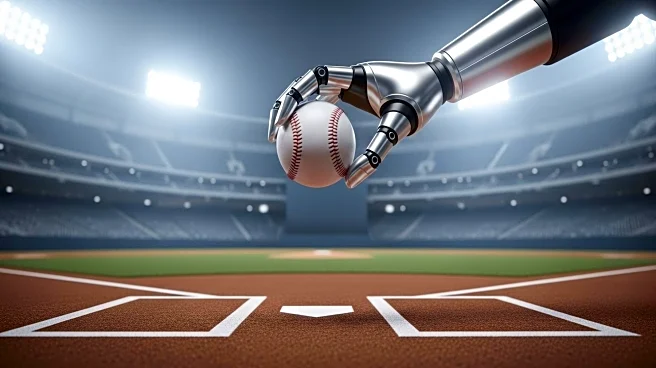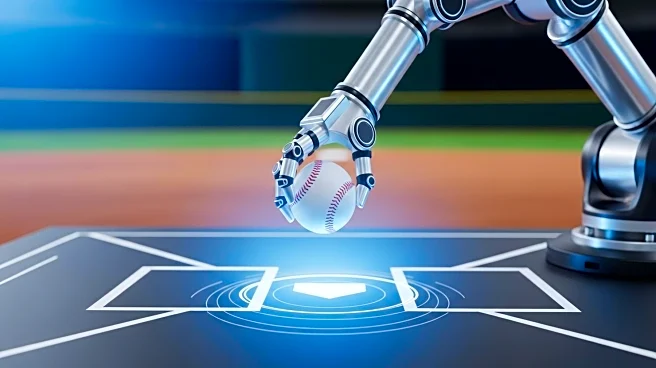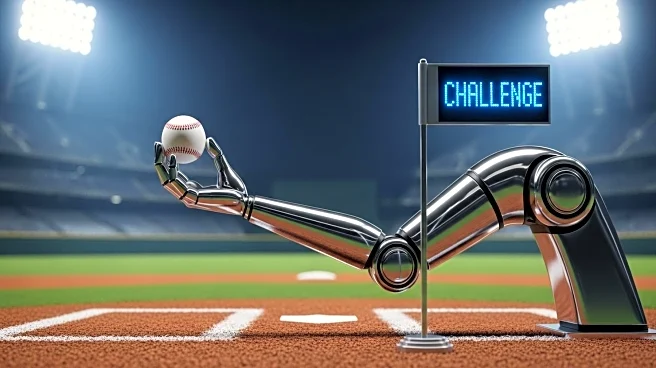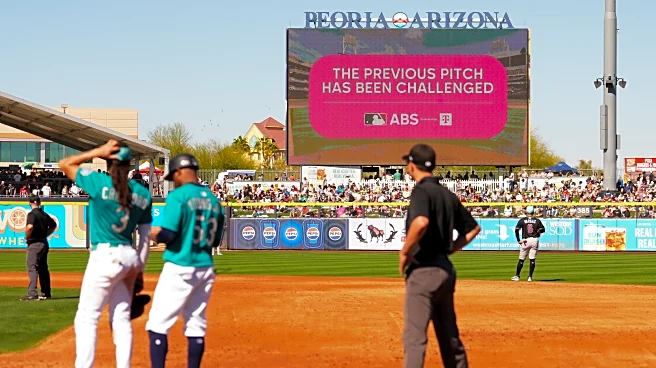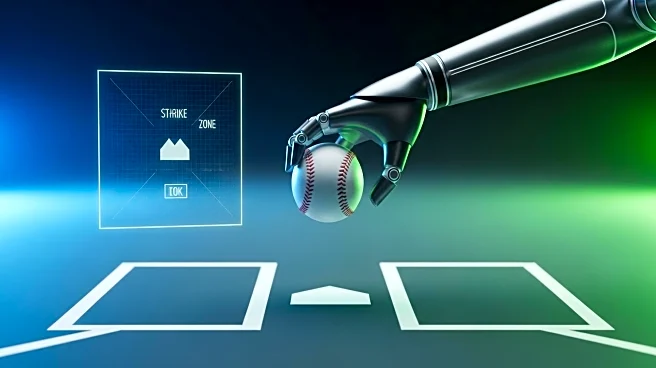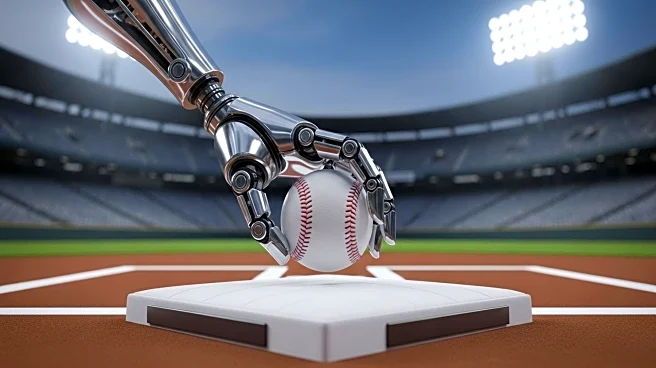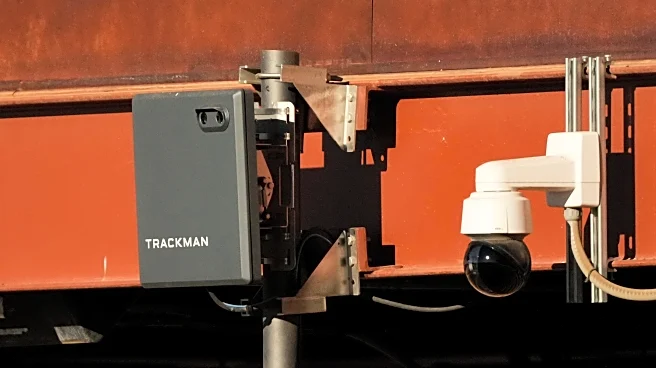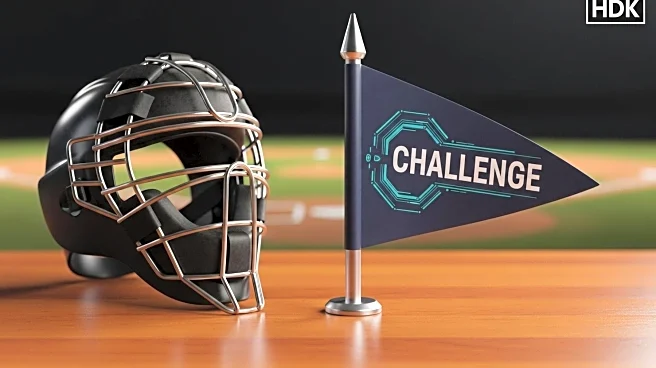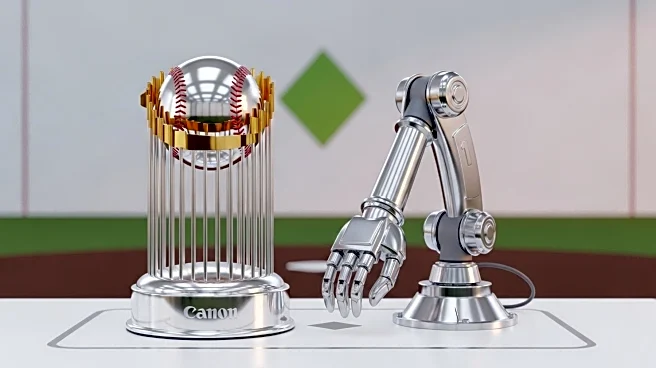“Take us to your leader” the robot commanded in classic staccato tone. Turns out his leader is a rectangle in which circles either fall fully inside, partly inside, or not at all inside. Welcome to the “challenge
system” version of ABS, which stands for “Automated Ball-Strike System”. Anti Lock Brakes are not involved, and umpires’ calls still matter quite a bit — teams each have just 2 challenges to burn meaning 2 failed challenges and you’re at the ump’s mercy the rest of the game. (Extra innings bring a fresh challenge each inning if you’re out.)
I hate replay in general and especially hate the way MLB has put it to use for tags, plays at 1B, etc. Instead of giving recourse for egregiously missed calls, you now delay the game 1-2 minutes to see if a runner’s foot came off the bag a split second before his hand touched it or whether the ball got fully into the pocket of the 1Bman’s glove before the foot made an indentation with the bag.
One of the worst aspects of replay, while I’m on that soap box, is how you can’t even celebrate a big moment. Now it’s “Great throw, he’s out unless it’s challenged and overturned!!!!!” Terrible.
ABS: A Necessary Move
So then why am I “all in” for this ABS challenge system? First off, to my dying day I will argue that balls and strikes umpires are simply out of position and don’t have a fighting chance to properly see pitches.
I watch games on TV, enjoying the center field camera angle, and even when the rectangle is not shown I can generally “call” balls and strikes with great accuracy. I am also not fooled by good framing, or a catcher who has to reach for a pitch a foot from the target.
Occasionally they switch to an angle behind the plate for the pitch and then I have little idea whether the pitch is a ball or strike. And that’s closer to the ump’s view.
Why is the ump’s view so poor? First off, due to the catcher an umpire can’t set up straight to the pitcher. He has to choose over the catcher’s left or right shoulder, leaving him at a slight angle that ever so subtly distorts the perception of where one side of the plate ends.
Compounding the problem, the catcher is also in the way of the view of the ball itself at the very end of it’s flight. So where I’m watching a pitch for 60 feet and 6 inches, the umpire is seeing it for more like 59 feet and 6 inches.
If I were an umpire I would be the renegade insisting on calling balls and strikes from behind the mound and I believe the accuracy from there would be more like 97% than the 94% umps get now — which would mean cutting errors in half. But given where umps are positioned I think it’s inevitable that they are going to be far from perfect.
Good System
Meanwhile, I think MLB has gotten it right with regard to how to implement a challenge system. Only the principally involved people can initiate a challenge: the batter, the pitcher, or the catcher. They have to do it immediately and not after advice is relayed from the walkway by someone looking at replay video. The “Pitch Trax” image is shown on the stadium jumbo tron almost instantly giving fans real time access to the challenge info, and the verdict itself is rendered in an average of 13 seconds.
Now that’s a workable system.
Human Element Still Very Much There
I know there are some who feel the most important goal is to get everything 100% right. I think maintaining the human element in a human game is essential too, especially when remedies exist for clearly missed calls.
By limiting teams to 2 challenges per game you force teams to really assess how sure they are a call was blown. If it’s one of those “coin flip” calls, in which either call is reasonable and only the robot knows which one was technically right, it’s probably not worth challenging. Whereas if a call seems clearly wrong and it’s a bases loaded situation with the count 3-2, you can make sure a bad ump doesn’t ruin a good game.
In 2026 you’re going to see a lot of calls that prove to be “wrong” at home not challenged simply because the pitch is too close and the situation not essential enough. Humans will still have a huge impact on games, but players will still have the opportunity to right an important wrong. To me it’s the right balance.
In fact I wouldn’t mind replay nearly as much if they went to a comparable system for calls on the field. On close plays at 1B, limit challenges to immediate “tap on your helmet” replay requests by either the runner, the 1Bman, or the 1B coach. On tag plays at 2B, an immediate plea by the fielder, the runner, or either base coach, and so on. Have the play reviewed by someone in the stadium and if replay doesn’t reveal a missed call within 30 seconds then the call stands. You’re weeding out the terrible blown calls, not the ones off by a fraction of a second or a split second disengagement with the base.
Anyway stopping umpires, who are poorly positioned in the first place, from interfering with games by repeatedly missing calls, favoring veterans over rookies, treating 3-0 pitches differently from 2 strike pitches, all with no accountability, is a worthy goal. And MLB has, in my ever so humble opinion, settled on the right balance of keeping the human element while taking bad balls/strikes umpires out of the spotlight.
I, for one, welcome our robot overlords and will spend the off-season kneeling in worship of the Almighty Rectangle.

